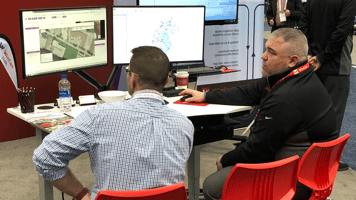 Sewer maintenance professionals depend heavily on sewer inspection equipment and software. In simple terms, the equipment gathers video and measurements from inside the sewer, and the software allows us to classify, analyze and archive that data. With the latest generation of software yielding new insights and better maintenance decisions, choosing a software platform is as important as choosing equipment. However, software often comes bundled into a crawler sale, so purchasers may fail to understand their full range of options. Ultimately, many settle for what’s presented, rather than what’s possible.
Sewer maintenance professionals depend heavily on sewer inspection equipment and software. In simple terms, the equipment gathers video and measurements from inside the sewer, and the software allows us to classify, analyze and archive that data. With the latest generation of software yielding new insights and better maintenance decisions, choosing a software platform is as important as choosing equipment. However, software often comes bundled into a crawler sale, so purchasers may fail to understand their full range of options. Ultimately, many settle for what’s presented, rather than what’s possible.
Understanding your options means first understanding the concept of hardware neutrality. Simply put, software with hardware neutrality can interface with a broad range of equipment brands and inspection technologies. Although equipment and software are both sophisticated in their own right, standardization — both of video formats and sewer defect codes — means little should stand in the way of any sewer inspection software interfacing with any other sewer inspection equipment. Still, understanding the nuances means understanding what hardware neutrality means on a practical level.
Standards Support
In the sewer industry, standards like PACP and WRc exist primarily for two reasons: so data can be exchanged freely among people using different systems, and so that data gathered by different people can be compared accurately. When evaluating your software options, determine whether the software you're considering is certified to whatever standard you use. If you use PACP, for instance, you’ll want PACP-certified software. This means it will be able to accept PACP data from any other PACP-certified software or hardware, and it will export compliant data that can be used by any other PACP-certified software. Likewise, if your crawler system allows you to code defects directly on the control interface, PACP compliance will ensure the data sets it produces will be compliant with any PACP-certified software. To test PACP data compliance, NASSCO offers a free data validator at https://www.nassco.org/certified-software.
Compatibility
In addition to observation data, video, images and distance data must also be exchanged between software and hardware. Images and video file formats use common standards: JPEG for images and MPEG or AVI for video. If you’re considering software that uses proprietary or less common formats, be warned that you may have trouble sharing the footage you collect with others.
To record the location of defects, your software will also need to know how far your crawler has traveled. A mechanism called an encoder is responsible for taking that measurement. Most software, including WinCan, will accept data from any encoder — the manufacturer just needs to publish calibration data so the software can accurately interpret the encoder data. If you encounter software that won’t accept encoder calibration data, or hardware whose manufacturer won’t share that calibration data, the reason is usually a deliberate attempt to limit your choices.
GIS maps also play an increasingly prominent role in inspection data. Be sure the software you evaluate supports common data types and integrates with industry-standard mapping tools like ESRI ArcGIS.
Methods Support
Throughout the decades, sewer inspection software has evolved alongside CCTV crawlers. These days, most software is expanding beyond traditional CCTV to support emerging technologies like side scanning, manhole scanning, laser profiling and geospatial (XYZ) mapping. These technologies produce data that is more complex, so interoperability between software and hardware is not always a given. It’s important to choose a vendor that is committed to open architecture and hardware neutrality. For instance, WinCan’s scan explorer imports side scan data from a variety of hardware brands (Envirosight, IBAK/Rapidview, iPEK), and is committed to implementing data from any other manufacturer that provides access to its data structures. Likewise, IBAK/Rapidview’s Geosense geospatial probe collects open-standards data that any software manufacturer can implement. As a rule of thumb, ask hardware vendors how many software applications can read their data, and ask software vendors how many different implementations of a particular technology they support — the higher the number, the greater their commitment to openness and neutrality.
Fight for Your Rights
Digital technology and industry standards have evolved, and there’s no excuse for any hardware not to work with any software. If you’re evaluating a hardware purchase that restricts your software options, or a software purchase that restricts your hardware options, investigate why. The reason may be simply to restrict your choices. Don’t relinquish control — the freedom to choose software and hardware independently is essential to your ability to evolve with the industry and with technology.
To learn more about WinCan’s hardware compatibility visit our compatibility page. To learn more about how WinCan’s hardware neutral software can integrate seamlessly with your current sewer inspection workflow, request a demo:





